Potrebujeme váš súhlas na využitie jednotlivých dát, aby sa vám okrem iného mohli ukazovať informácie týkajúce sa vašich záujmov. Súhlas udelíte kliknutím na tlačidlo „OK“.
ASTM D6046-02(2012)
Standard Classification of Hydraulic Fluids for Environmental Impact
Automaticky preložený názov:
Štandardnej klasifikácie hydraulických kvapalín pre vplyvy na životné prostredie
NORMA vydaná dňa 15.4.2012
Informácie o norme:
Označenie normy: ASTM D6046-02(2012)
Poznámka: NEPLATNÁ
Dátum vydania normy: 15.4.2012
Kód tovaru: NS-33547
Počet strán: 8
Približná hmotnosť: 24 g (0.05 libier)
Krajina: Americká technická norma
Kategória: Technické normy ASTM
Kategórie - podobné normy:
Anotácia textu normy ASTM D6046-02(2012) :
Keywords:
biodegradation, ecotoxicity, environmental persistence, hydraulic fluid, insoluble material, Biodegradation--petroleum products, Ecotoxicity, Environmental monitoring, Hydraulic fluids/oils, Insoluble matter content--petroleum products, ICS Number Code 75.120 (Hydraulic fluids)
Doplňujúce informácie
| Significance and Use | |||||||||||||||||||||||
|
This classification establishes categories of hydraulic fluids which are distinguished by their response to certain standardized laboratory procedures. These procedures indicate the possible response of some environmental compartments to the introduction of the hydraulic fluid. One set of procedures measures the aerobic aquatic biodegradability (environmental persistence) of the fluids and another set of procedures estimates the acute ecotoxicity effects of the fluids. Although this classification includes categories for both persistence and ecotoxicity, there is no relationship between the two categories. They may be used independently of each other, that is, a hydraulic fluid can be categorized with respect to both sets of laboratory procedures, or to persistence but not ecotoxicity, or to ecotoxicity but not persistence. There is no relationship between the categories achieved by a hydraulic fluid for persistence and for ecotoxicity. The placing of a hydraulic fluid with regard to one set of categories has no predictive value as to its placement with regard to the other set of categories. The test procedures used to establish the categories of hydraulic fluids are laboratory standard tests and are not intended to simulate the natural environment. Definitive field studies capable of correlating test results with the actual environmental impact of hydraulic fluids are usually site specific and so are not directly applicable to this classification. Therefore, the categories established by this classification can serve only as guidance to estimate the actual impact that the hydraulic fluids might have on any particular environment. This classification can be used by producers and users of hydraulic fluids to establish a common set of references that describe some aspects of the anticipated environmental impact of hydraulic fluids which are incidental to their use. Inclusion of a hydraulic fluid in any category of this classification does not imply that the hydraulic fluid is suitable for use in any particular hydraulic system application. The composition of hydraulic fluids may change with use and any change could influence the environmental impact of a used hydraulic fluid. Therefore, the classification of a hydraulic fluid may change upon use depending on the type and extent of the use. |
|||||||||||||||||||||||
| 1. Scope | |||||||||||||||||||||||
|
1.1 This classification covers all unused fully formulated hydraulic fluids in their original form. 1.2 This classification establishes categories for the impact of hydraulic fluids on different environmental compartments as shown in Table 1. Fluids are assigned designations within these categories; for example PwL, Pwe, and so forth, based on performance in specified tests. 1.3 In the current version of this classification the aspects of environmental impact included are environmental persistence of which biodegradability is one component and acute ecotoxicity. Although environmental persistence is discussed first, this classification does not imply that considerations of environmental persistence should take precedence over concerns for ecotoxicity. 1.4 Another important aspect of environmental impact is bioaccumulation. This aspect is not addressed in the present classification because adequate test methods do not yet exist to measure bioaccumulation of hydraulic fluids. 1.5 The present classification addresses the fresh water and soil environmental compartments. At this time marine and anaerobic environmental compartments are not included, although they are pertinent for many uses of hydraulic fluids. Hydraulic fluids are expected to have no significant impact on the atmosphere; therefore that compartment is not addressed. 1.6 This classification addresses releases to the environment which are incidental to the use of a hydraulic fluid. The classification is not intended to address environmental impact in situations of major, accidental release. Nothing in this classification should be taken to relieve the user of the responsibility to properly use and dispose of hydraulic fluids. 1.7 This classification does not cover any performance properties of a hydraulic fluid which relate to its performance in a hydraulic system. 1.8 This standard does not purport to address all of the safety concerns, if any, associated with its use. It is the responsibility of the user of this standard to establish appropriate safety and health practices and determine the applicability of regulatory limitations prior to use. TABLE 1 Overview of Extended Classification
|
|||||||||||||||||||||||
| 2. Referenced Documents | |||||||||||||||||||||||
|
|||||||||||||||||||||||
Podobné normy:
Historická
1.5.2014
Historická
1.5.2013
Historická
1.7.2014
Historická
1.6.2012
Historická
1.10.2010
Historická
1.6.2014
Odporúčame:
Aktualizácia zákonov
Chcete mať istotu o platnosti využívaných predpisov?
Ponúkame Vám riešenie, aby ste mohli používať stále platné (aktuálne) legislatívne predpisy
Chcete vedieť viac informácií ? Pozrite sa na túto stránku.


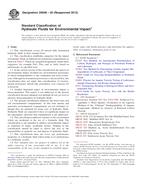
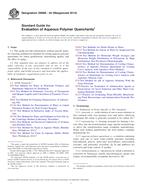 ASTM D6666-04(2014)..
ASTM D6666-04(2014)..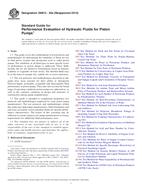 ASTM D6813-02a(2013)..
ASTM D6813-02a(2013)..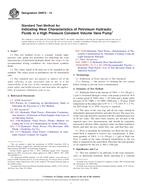 ASTM D6973-14
ASTM D6973-14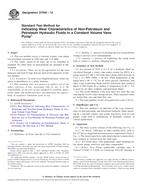 ASTM D7043-12
ASTM D7043-12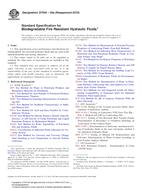 ASTM D7044-04a(2010)..
ASTM D7044-04a(2010)..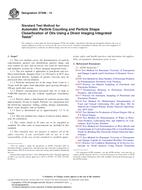 ASTM D7596-14
ASTM D7596-14
 Cookies
Cookies
